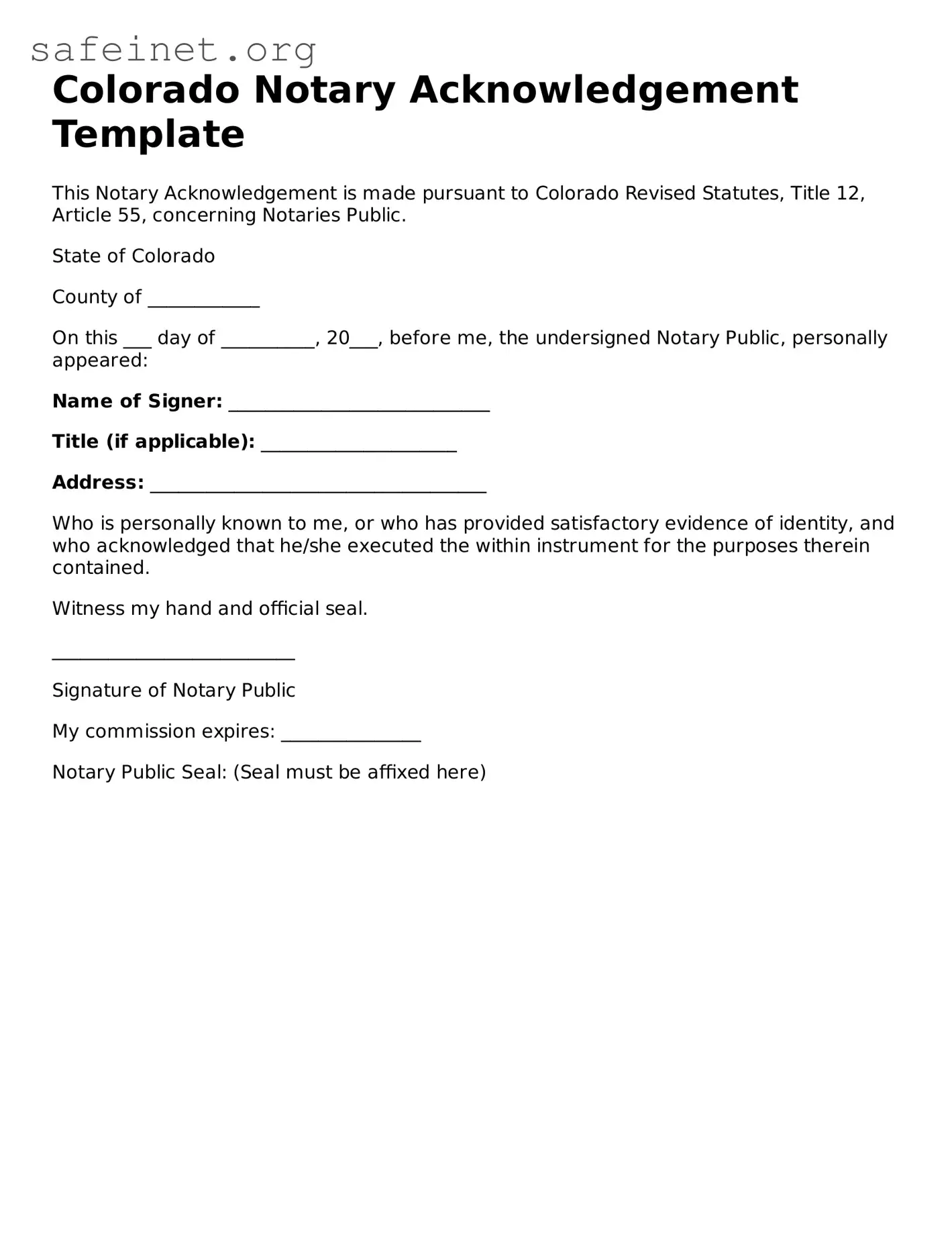Valid Notary Acknowledgement Template for the State of Colorado
The Colorado Notary Acknowledgement form is a legal document that serves to verify the identity of the signatory and confirm their intention to sign a document. This essential form helps ensure that the signing process is conducted properly and that the document holds legal validity. For a smooth and compliant notarization, be sure to fill out the form by clicking the button below.
